Kirby Larson's Blog, page 22
January 26, 2014
Urgh.
Today, I had hoped to post about my recent (and wonderful!) trip to Guam. But something is up with my photos (long story).
Check back on WEDNESDAY which is when I PROMISE to give you the entire scoop.
Check back on WEDNESDAY which is when I PROMISE to give you the entire scoop.
Published on January 26, 2014 12:36
January 24, 2014
Friend Friday
I am delighted to introduce you to E. S. Ivy, today's guest blogger. Growing up in East Texas, she preferred her adventures to be in books. A chemist by education, her interest in plants led her to be involved with research studies on space missions; she's also worked as a writer and editor of children's science textbooks but got frustrated when all the fun parts got taken out. That's when she turned to novel writing: lucky for us!
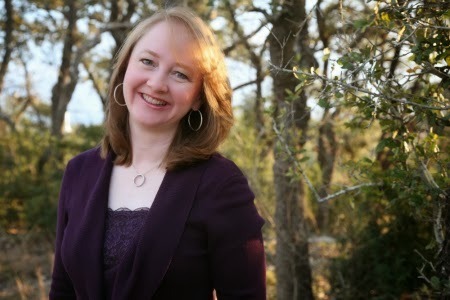 E.S. Ivy
E.S. Ivy
I think that path for all writers – especially for children's writers – starts when we're readers, as kids. And I had some definite opinions on what I wanted to read when I was young.
Before I even started a book, I wanted to be sure the book was going to have a happy ending. Because if it had a sad ending, I wasn't going to like the book. And then I would have just wasted my time.
I also wanted to read a book about a girl. I was totally uninterested in books about boys. This held for everything from biographies to mysteries.
It couldn't be too spooky. I could scare myself perfectly well on my own. My imagination didn't need any new ideas.
And lastly, I really wanted books that I could learn something from without putting in any effort. That's probably why I liked biographies. I loved Sydney Taylor's All-of-A-Kind-Family where I learned a lot about Jewish holidays. And it's also why I was so disappointed by A Wrinkle in Time series. After all that learning about farandolae and mitochondria, it was a let down to find out that none of it was true. I wasn't secretly a mitochondria expert.
But books that set out with the goal of teaching science tend to sacrifice the story for the science, so when I began to write the book that later became Miri Attwater and the Ocean's Secret, I was planning to write straight fantasy.
What could be easier? Need something? Just use magic.
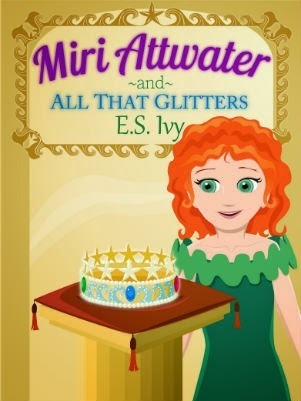
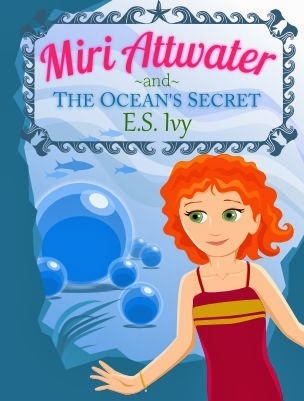
How could a girl grow up not knowing she's a mermaid? Her legs magically turned into tails in the sea water. That's it. Magic explains everything. It had been used by writers before me, all the way back to mythology. But every time I wrote about mermation, something was off. It felt hollow and unsubstantial. I didn't believe it. And if I as the writer didn't believe it, then the reader wouldn't either.
Then I got to the part where Miri swam in the ocean for the first time. I tried to write the scenes strictly from the memories of snorkeling trips from several years before. But just like the photos from our disposable underwater camera, my words were washed out and hazy. They didn't capture the vividness of the tropical ocean.
So I let myself watch some marine documentaries. And then I may have watched a few more. Let's just say that I get a little obsessed with research, and leave it at that.
Then at some point in all my obsessive viewing, I saw an octopus instantly change the color and texture of its skin for camouflage.
And just like that, I knew. My mermaids didn't need magic for mermation. All they needed was a little octopus biology!
Which means mermaids really could exist. In fact, Christopher Columbus recorded a mermaid sighting in his captain's log.
Who says mermaids aren't real?
It might tell you a little bit about me, that at this point I feel compelled to tell you that I'm not a marine biologist. In fact, my PhD is in plant biology, not even animal biology. But in researching the Miri Attwater books, I found that marine biology is more fascinating than I ever thought possible. My newest book is Miri Attwater and All That Glitters, about Miri's underwater adventures living at the bottom of the ocean among the mermaids of Kai Kaona. You can find me at my website, where I blog about my books, original crafts, and children's literature.
 E.S. Ivy
E.S. Ivy
I think that path for all writers – especially for children's writers – starts when we're readers, as kids. And I had some definite opinions on what I wanted to read when I was young.
Before I even started a book, I wanted to be sure the book was going to have a happy ending. Because if it had a sad ending, I wasn't going to like the book. And then I would have just wasted my time.
I also wanted to read a book about a girl. I was totally uninterested in books about boys. This held for everything from biographies to mysteries.
It couldn't be too spooky. I could scare myself perfectly well on my own. My imagination didn't need any new ideas.
And lastly, I really wanted books that I could learn something from without putting in any effort. That's probably why I liked biographies. I loved Sydney Taylor's All-of-A-Kind-Family where I learned a lot about Jewish holidays. And it's also why I was so disappointed by A Wrinkle in Time series. After all that learning about farandolae and mitochondria, it was a let down to find out that none of it was true. I wasn't secretly a mitochondria expert.
But books that set out with the goal of teaching science tend to sacrifice the story for the science, so when I began to write the book that later became Miri Attwater and the Ocean's Secret, I was planning to write straight fantasy.
What could be easier? Need something? Just use magic.


How could a girl grow up not knowing she's a mermaid? Her legs magically turned into tails in the sea water. That's it. Magic explains everything. It had been used by writers before me, all the way back to mythology. But every time I wrote about mermation, something was off. It felt hollow and unsubstantial. I didn't believe it. And if I as the writer didn't believe it, then the reader wouldn't either.
Then I got to the part where Miri swam in the ocean for the first time. I tried to write the scenes strictly from the memories of snorkeling trips from several years before. But just like the photos from our disposable underwater camera, my words were washed out and hazy. They didn't capture the vividness of the tropical ocean.
So I let myself watch some marine documentaries. And then I may have watched a few more. Let's just say that I get a little obsessed with research, and leave it at that.
Then at some point in all my obsessive viewing, I saw an octopus instantly change the color and texture of its skin for camouflage.
And just like that, I knew. My mermaids didn't need magic for mermation. All they needed was a little octopus biology!
Which means mermaids really could exist. In fact, Christopher Columbus recorded a mermaid sighting in his captain's log.
Who says mermaids aren't real?
It might tell you a little bit about me, that at this point I feel compelled to tell you that I'm not a marine biologist. In fact, my PhD is in plant biology, not even animal biology. But in researching the Miri Attwater books, I found that marine biology is more fascinating than I ever thought possible. My newest book is Miri Attwater and All That Glitters, about Miri's underwater adventures living at the bottom of the ocean among the mermaids of Kai Kaona. You can find me at my website, where I blog about my books, original crafts, and children's literature.
Published on January 24, 2014 05:30
January 23, 2014
From the Office of the Future of Reading
Please join me in welcoming today's guest blogger, Sara Ralph, who has been an elementary school librarian for eleven years. She has always loved reading and is dedicated to making sure her students and three daughters do, too. She has a blog and you can find her on Twitter.
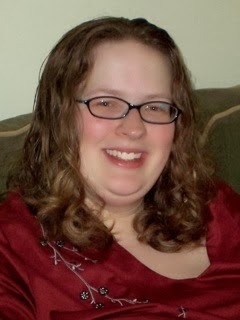
A Right Book for Every Reader
When I hear the term reluctant reader, I picture two men who look like bouncers, dragging a student, most likely a boy, into a library and forcing him to pick a book. I recently read a great quote from author James Patterson, who initiated ReadKiddoRead.com: “There’s no such thing as a kid who hates reading. There are kids who love reading, and kids who are reading the wrong books.” So how do we help kids find the right books? One word: choice.
It seems simple, right? However, in the educational world of Common Core, grade level text, exemplar titles, close reading, Lexile levels, and Accelerated Reader/Reading Counts programs, students having the freedom to read what they want to read at school is something that is in danger. It is up to educators to preserve it. What does freedom to read look like in my elementary school library?
Picture books are for everyone. The first thing I did was change “Easy Fiction” to “Everyone.” I read picture books to all students, and they know I love picture books. I wanted to undo the idea that students outgrow picture books.
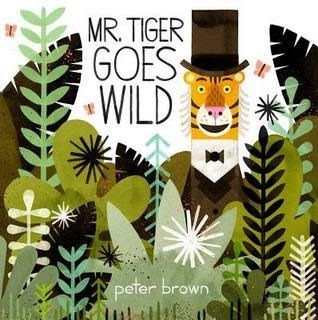
Out with the old and in with the new. Library collections are living organisms; they needed to be weeded and new books need to be purchased. Budget challenges in schools are no joke. I have advocated with my principal for library funding. I have two book fairs each year to raise money to purchase library books. I have been awarded a grant from the NC State Library. I have asked the PTO to help purchase books. I purchase $250 worth of books for the library each year, using the educator tax credit provided by the federal government. For title ideas, there are endless kidlit blogs on the web; a great place to start: The Nerdy Book Club.

Graphic novels are awesome. Kids love graphic novels. They are NOT junk reading. Publishers have realized the popularity of these books and more are being published than ever, even for elementary students. Kidlit blogs and professional magazines can provide guidance on finding high quality graphic novels.
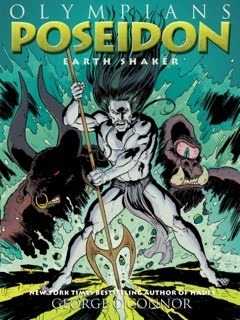
Two books are not enough. If you want students to read, they need access to more books. One of the best moments I’ve experienced as an educator was at the beginning of the school year when I suggested to a student that five books was a good number to check out. The excited look on the students face as she whispered to another student, “She said we could check out FIVE!” is something I will never forget.
Taking risks is encouraged. Say a third grader who reads below grade level comes in and checks out Harry Potter. In terms of “just right books,” this is a poor choice. However, it is important that we allow students take risks as readers. Telling someone they can’t read a particular book is a terrible thing to do to a child because all they hear is “You can’t read.”
Thank you Sara for sharing your insight and for all the wonderful work you do getting kids to love reading! And to repeat the information from Tuesday's post, First Book might be an additional resource for you in terms of adding to your library collection. Here's my Author in Action link! Also, check out the Target Early Childhood Reading grants.
Published on January 23, 2014 05:30
January 22, 2014
Wednesday Wisdom
A little nonsense now and then is relished by the wisest men.
Roald Dahl
Roald Dahl
Published on January 22, 2014 05:30
January 21, 2014
From the Office of the Future of Reading
Please help me welcome today's guest blogger, Mary Roderique. After teaching in New York City and Bloomington, IN, Mary Roderique relocated to Ann Arbor, MI, for more desirable weather conditions. She lives with her husband, children (4th grade and Kindergarten), and dog (who can read 3 words). She has worked as a classroom teacher and literacy and curriculum trainer since 1996. Currently, she works for Ann Arbor Public Schools as a Reading Intervention teacher. Hobbies include reading, blogging, ice skating, singing, and drinking coffee. Mary has been living the hocus-pocus for over 15 years and believes in the power of a good book, the power of workshop teaching, and the power of relationships. You can read more from Mary on her blog.
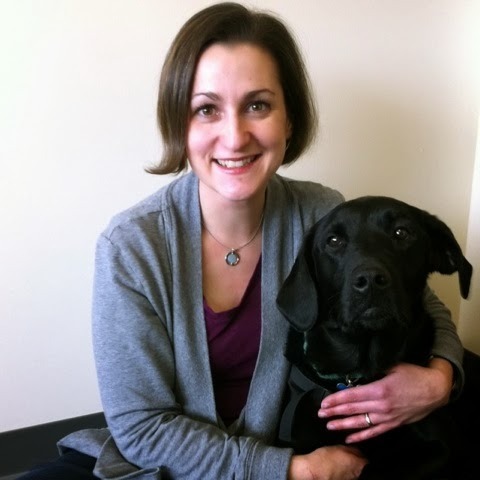
The Hocus Pocus of Working with Readers
Teaching reading is not really about book levels, guided reading, and miscue analysis. Teaching reading is about creating community. And the easiest way to create a community is with a little hocus-pocus, weaving purpose, initiative, and joy into instruction.
After I began teaching, I began having conversations with my class about us being the kind of people who talk to other people about books, who stay up too late reading a book because someone else is waiting for it, who bring a book just-in-case we have to wait because we’d have precious minutes to read! I scoured bookstores for books for my students, organized the classroom library, wrote grants to get them even more books. My class was buzzing. Books anchored our classroom community and it felt amazing to be in that space together.
Truth be told, I was busy: professional reading, developing curriculum, committee work, responding to student work, lunch duty, walking the dog, groceries. Phew. I started slipping.
One day when I opened my mouth to talk about our reading and writing lives at home, I realized that I was a big faker. While I was having some hocus pocus with my students, I wasn’t doing it myself. Sure, I was reading at home, I was writing at home, but only professional books for work. I wasn’t reading, writing, or living for me anymore. I was all talk. I went home from school that day, left my work bag closed, and got out a book. Later that week, I went to a movie with my husband on a school night. After school I started leaving a little earlier and rollerblading on the rail-to-trail on my way home. I was living the hocus-pocus: reading, writing, and actively pursuing my interests. It all got easier: the have-to’s and projects took less time because I was coming in at my best. And now, while I may sometimes need a reminder, I’ve now been living the hocus pocus for over 15 years, and the personal and professional impact still astounds me.
Hocus pocus is not just an academic goal, it’s about living well in the world in way that reading, writing, and connecting with each other matter. There are other ways to get the hocus pocus, but reading and stories seem to be the easiest way to help a group of people both come together and find themselves.
The real magic of the hocus pocus is this: you must truly believe it in your heart and live it yourself before you say the words to cast the spell to others. Purpose, initiative, and joy.
Top Five Tricks of Hocus Pocus for Readers in Elementary Classrooms
1. Anchor your classroom with books, both literally and figuratively. Read Aloud and the classroom library hold together teaching, learning, and community.
2. Have the right book for right now. If all a kid will look at is a puzzle book, then start with a puzzle book. Then watch what he/she likes and get what’s next, and what’s next, and what’s next after that. Finding entry points and matching books to readers is essential.
3. Leave ‘em and loan ‘em. Leave books around. At home, I leave a book I think will interest my kids on the coffee table. It almost always gets picked up. At school, I strategically place books front-facing in our library baskets that I think will be appealing. Sometimes, I leave a book in someone’s cubby, with a note to the reader telling why I think the book will interest him/her. Lend books with enthusiasm!
4. Read aloud what you love. Read aloud changes the world: it is interesting, it builds community, and it’s a valuable tool for instruction. Also, it models a commitment to sustained work.
5. Live the Hocus Pocus. Pursuing your own reading, writing, and interests will shape both your practice and personality. Empower yourself so you can empower your students.
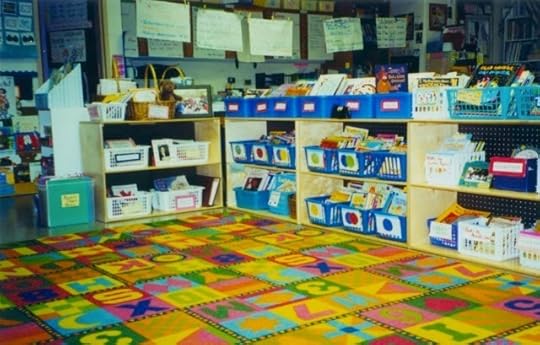
Books surrounded us in the meeting area of my last classroom, sorted into baskets by level, author, character, topic, catch-all picture books, and the all powerful books-we-have-read-aloud.
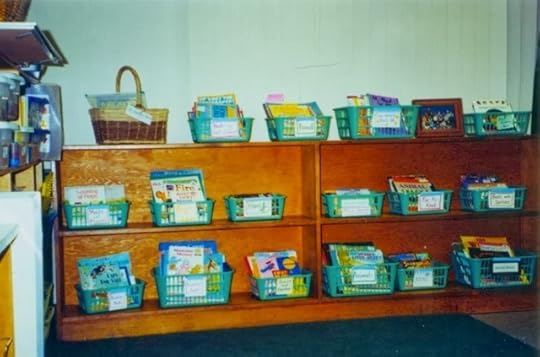
We sorted the books and developed the categories together in the nonfiction section of our library.
Thank you Mary for sharing your story with us. What a great reminder to keep reading and writing so we can honestly inspire others to as well! And did you know that First Book might be able to help your school acquire books so you can conjure up even more hocus pocus? I'm an Author in Action so you can register through me here!
Published on January 21, 2014 05:30
January 16, 2014
From the Office of the Future of Reading
Please join me in welcoming today's guest blogger, Lisa Kanute. Lisa teaches high school English and coaches varsity swimming in Tucson, Arizona. In her spare time, she likes to read, follow authors and other literary pages on facebook, hang out at home with her husband and dogs, and drink tea. She says, “The best cure for a stressful day is a trip to the bookstore.”

A Hitchhiker’s Guide to Encouraging Reluctant Readers
“I hate reading!” “I’ll never understand Shakespeare!” “Don’t worry, I’ll just look at SparkNotes instead.”
Sound familiar?
In my nine years of teaching high school English, the number one lesson I’ve learned is that nothing inspires my students to read more than my own enthusiasm for a book. Additionally, nothing kills their reading enjoyment quicker than letting my own dislike for a book show. Whether it is an assigned read for the whole class or a personal recommendation just for them, my students love to hear me rave about books I loved to read. And rave I do; I can’t help it.
My students are lucky. I LOVE to read, especially young adult books. I didn’t have to make myself read these books for my job. Instead, these are the books I naturally gravitate towards. By natural consequence, I have a decently sized classroom library, which I refer to often. When the class is reading Beowulf, I cannot help but to ask if they’ve heard of Grendel. When they reminisce about reading Frankenstein last year, I ask if they’ve read This Dark Endeavor. “You liked Homer’s Odyssey? Great! Have you read any of the Percy Jackson books?” They’ve hardly answered before I’m pulling the book off the shelf and offering to let them borrow it.
Two years ago, one of my sophomore students decided that he was going to read my entire classroom library (it helped that he was seated right next to it). I admired his goal, but wondered what he’d make of my collection. I never got to find out. He made it about a third of the way through when he fell in love with Tolkien. He read and re-read each of those books several times before the year was out. This is only one of many stories I have about my students and their (sometimes newfound) love of reading.
Would my students still read if I didn’t do this? Some, but not nearly as many. I know this because I’ve had students return to me, book in hand (usually one I recommended to them personally), telling me it’s the first book they’ve read to the end in years. Could I recommend books to my students without reading many of them myself? Maybe, but likely without the same amount of success. And finally, do I read every young adult book? No, not even every book in my own classroom library. So breathe easy, my friend, it’s not as daunting as it seems. Whether you read a lot of books or just a few, your students will appreciate knowing you as a reader just as much (if not more-so) than they appreciate knowing you as their teacher.
I end with a word of caution: If it would break your heart to loose a particular book, do not let students borrow it. I learned this one the hard way with a copy of Isaac Asimov’s out-of-print The Black Widower’s Club.
Thank you Lisa for sharing how you connect to students through books; and books to students.
Published on January 16, 2014 05:30
January 15, 2014
Wednesday Wisdom
The best thing to hold onto in life is each other.
Audrey Hepburn
Audrey Hepburn
Published on January 15, 2014 05:30
January 14, 2014
From the Office of the Future of Reading
Please join me in welcoming today's guest blogger, Janet Phillips. Janet was born in Arkansas but grew up a Navy brat and lived up and down the Eastern Seaboard. Janet lived in Buenos Aires, Argentina for four years where she attended high school at Lincoln American School. Over the years her path has crossed many other military brats and finds it amazing how many of them are avid readers. Janet has a master’s degree from Texas A&M. She has taught 4th grade in her home town for the last 26 years. Janet loves to read, paint, knit, and spoil her two grandchildren.
Long gone are rural family farms in the Natural State. Gone too is an educational system either at the bottom or second from the bottom on rankings of schools in the United States. Gone but not forgotten in the collective memory. When people from other states think of Arkansas, they often have us caught in a Groundhog Day scenario of the 1950’s. Over the past decades, educational leaders, politicians, and communities have been using literacy for educational changes. We teachers who fall into the book nerd category love it!
The progressive powers of education divided the state into fifteen educational cooperatives. These cooperatives have a vast array of experts, resources, supplies, and professional development offered free to the schools serviced. Professional development in literacy includes Early Literacy in Arkansas (ELLA). ELLA is a two year professional development for k-1 teachers for the implementation of a comprehensive literacy program. Effective Literacy (ELF) is also for two years for teachers of grades 2-4. Comprehensive Literacy for Adolescent Student Success (Class) is a two year program designed for teachers 5-12. CLASS is a comprehensive research-based approach to literacy instruction. Literacy Design Collaborative (LDC) focuses on Common Core Standards of English language arts. Teachers of social studies, science, ELA, and technical education use the LDC framework to build reading and writing skills in junior high and high school students.
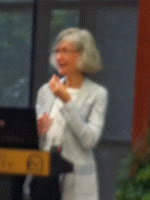 Linda DornThe director of reading education at the University of Arkansas at Little Rock is none other than Linda Dorn. She is the lead trainer of the Partnership in Comprehensive Literacy Model. She trains literacy coaches for schools and visits in schools. She is the ninja of theory in her books Apprenticeship in Literacy, Scaffolding Young, and Teaching for Deep Comprehension.
Linda DornThe director of reading education at the University of Arkansas at Little Rock is none other than Linda Dorn. She is the lead trainer of the Partnership in Comprehensive Literacy Model. She trains literacy coaches for schools and visits in schools. She is the ninja of theory in her books Apprenticeship in Literacy, Scaffolding Young, and Teaching for Deep Comprehension. At the Harding University in Searcy, Arkansas, teachers can attend Smart Step Literacy Lab Classroom project. This is another two year professional development opportunity. Ken Stamatis is a professor at Harding and director of the lit. lab. Ken Stamatis brings the rock stars of children’s and young adult books to Arkansas in another program called YA Author Series. Authors such as Patrick Carmon, Mary Downing Hahn, and Gary Schmidt come to Searcy for a dinner at Harding. This is on a Friday night. The most exhilarating Saturday follows. The author talks about how to use his or her books in your classroom. Yes, you need theory and direction but this is the bread and butter of making life long readers. A. LaFaye lived in Searcy several years ago because teachers in Arkansas were so passionate about reading.
 Ken Stamatis
Ken StamatisIn my classroom, I use a reading and writing workshop approach. I use a hybrid of theory and strategies but I want my students to love books. We just finished a Reading Fair. The children pick a book they love and present it on a tri-fold board with rubrics for fiction and nonfiction. They learn about tone and mood, text structure, information on the author etc. This project is fun but the real day to day thing I do is love books and get them to love them also.
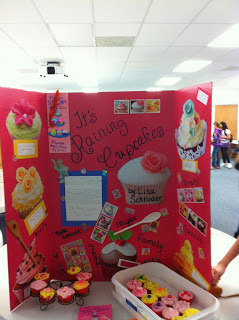
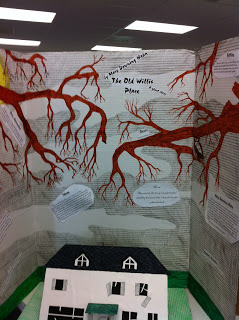
Thank you Janet for giving us some insight into the growth of the educational system in Arkansas. Keep up the inspiring work!
Published on January 14, 2014 05:30
January 9, 2014
From the Office of the Future of Reading
Hafah Adai!
As you read this, I will be enroute to Guam. Or perhaps I’ll be there already; this time zone thing is completely confusing.

I keep telling (promising!) my husband that I will cut back on travel. But when the IRA representative from Guam approached me about a year ago, extending an invitation to visit, I couldn’t say no. The reason?
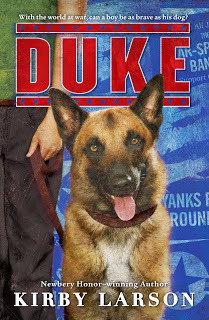
My latest book, Duke,is about a boy, Hobie, who lends his dog to Uncle Sam during WWII. Hobie thinks Duke will stay stateside, possibly helping to guard the Boeing airplane factory. But Hobie has done such a great job training Duke that he’s a perfect candidate for the Marine’s War Dog unit. So Duke is sent off to Camp Lejeune for training and Hobie is left home to worry, and cook up a scheme to get him back.
At Camp Lejeune, Duke – like the other loaned dogs – is paired with a trainer. I borrowed the name of one of the real War Dog trainers, Pfc. Marvin Corff, and gave it to Duke’s handler. (I’ve actually had a note from Pfc. Corff’s family since the book came out!)
How did I learn about Marvin Corff and the War Dogs? From this wonderful and heart-wrenching book:
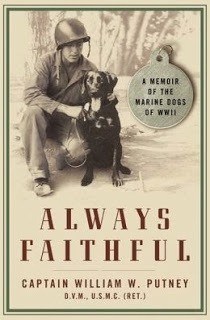
Capt. William Putney, a veterinarian, did everything he could to keep the War Dogs safe and sound. But when the unit is shipped to Guam, nothing he can do keeps dogs like Skipper and Bunkie and Missy and their 22 four-legged comrades safe from harm. These brave dogs sacrificed their lives to save many, many soldiers.
Capt. Putney could never forget those dogs, nor how much they meant to the men they partnered with. He made sure they were given appropriate burials on Guam, in their own dog cemetery. But when he visited the site in the 1980s, he found the cemetery overgrown and unkempt. Capt. Putney was not about to let his “Marines” down and began to fundraise to create a real memorial, complete with statue and plaque.

The memorial is on a military base and requires special permission for a visit. But my hosts have graciously made arrangements and tomorrow (or at least, my tomorrow!) I will get to see the place that inspired me to write Duke.
I am grateful that my books not only challenge and surprise me in the writing (sitting in my little office in Kenmore, Washington), they challenge and surprise me once they’re out there in the world. In addition to nearly every state in this country, my books have sent me to Germany, Lebanon, Qatar and, now, to a small island in the middle of the Pacific Ocean.
I can’t wait!
As you read this, I will be enroute to Guam. Or perhaps I’ll be there already; this time zone thing is completely confusing.

I keep telling (promising!) my husband that I will cut back on travel. But when the IRA representative from Guam approached me about a year ago, extending an invitation to visit, I couldn’t say no. The reason?

My latest book, Duke,is about a boy, Hobie, who lends his dog to Uncle Sam during WWII. Hobie thinks Duke will stay stateside, possibly helping to guard the Boeing airplane factory. But Hobie has done such a great job training Duke that he’s a perfect candidate for the Marine’s War Dog unit. So Duke is sent off to Camp Lejeune for training and Hobie is left home to worry, and cook up a scheme to get him back.
At Camp Lejeune, Duke – like the other loaned dogs – is paired with a trainer. I borrowed the name of one of the real War Dog trainers, Pfc. Marvin Corff, and gave it to Duke’s handler. (I’ve actually had a note from Pfc. Corff’s family since the book came out!)
How did I learn about Marvin Corff and the War Dogs? From this wonderful and heart-wrenching book:

Capt. William Putney, a veterinarian, did everything he could to keep the War Dogs safe and sound. But when the unit is shipped to Guam, nothing he can do keeps dogs like Skipper and Bunkie and Missy and their 22 four-legged comrades safe from harm. These brave dogs sacrificed their lives to save many, many soldiers.
Capt. Putney could never forget those dogs, nor how much they meant to the men they partnered with. He made sure they were given appropriate burials on Guam, in their own dog cemetery. But when he visited the site in the 1980s, he found the cemetery overgrown and unkempt. Capt. Putney was not about to let his “Marines” down and began to fundraise to create a real memorial, complete with statue and plaque.

The memorial is on a military base and requires special permission for a visit. But my hosts have graciously made arrangements and tomorrow (or at least, my tomorrow!) I will get to see the place that inspired me to write Duke.
I am grateful that my books not only challenge and surprise me in the writing (sitting in my little office in Kenmore, Washington), they challenge and surprise me once they’re out there in the world. In addition to nearly every state in this country, my books have sent me to Germany, Lebanon, Qatar and, now, to a small island in the middle of the Pacific Ocean.
I can’t wait!
Published on January 09, 2014 05:30
January 8, 2014
Wednesday Wisdom
I have always depended on the kindness of strangers.
Blanche DuBois, in Tennessee Williams' "Street Car Named Desire"
Blanche DuBois, in Tennessee Williams' "Street Car Named Desire"
Published on January 08, 2014 05:30



